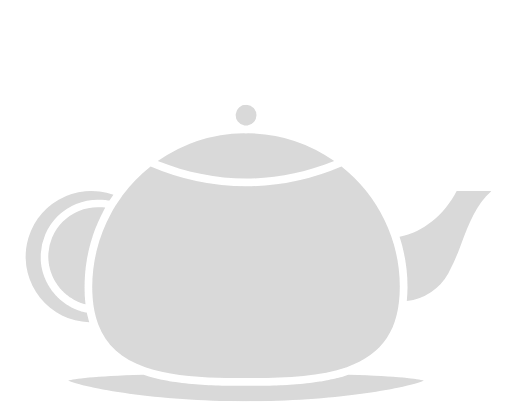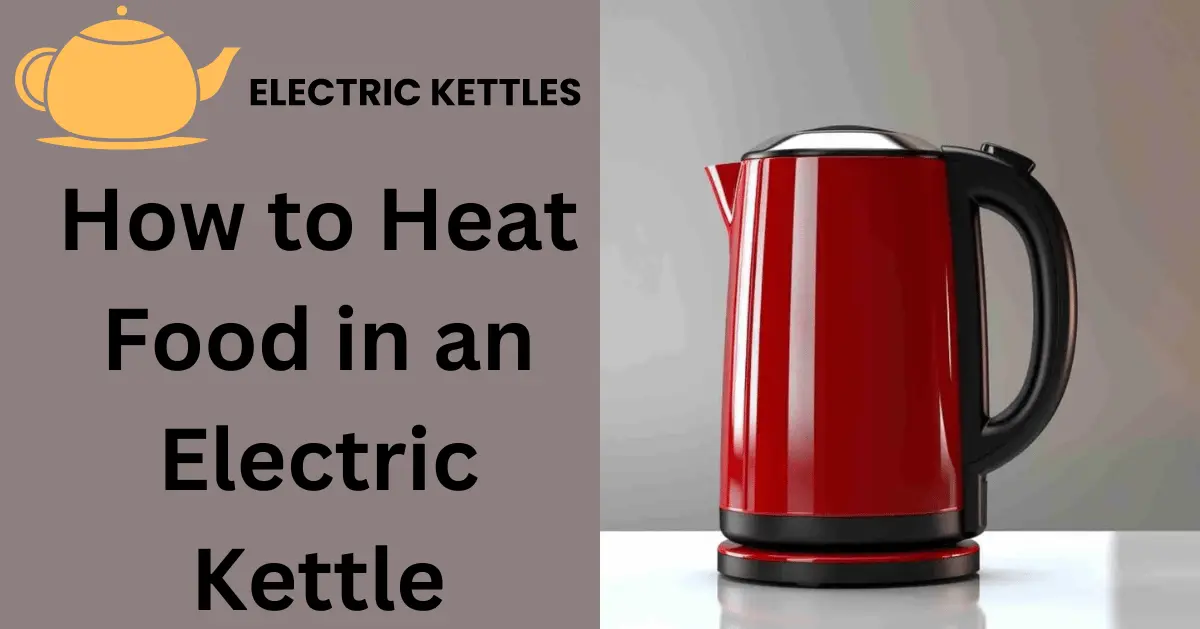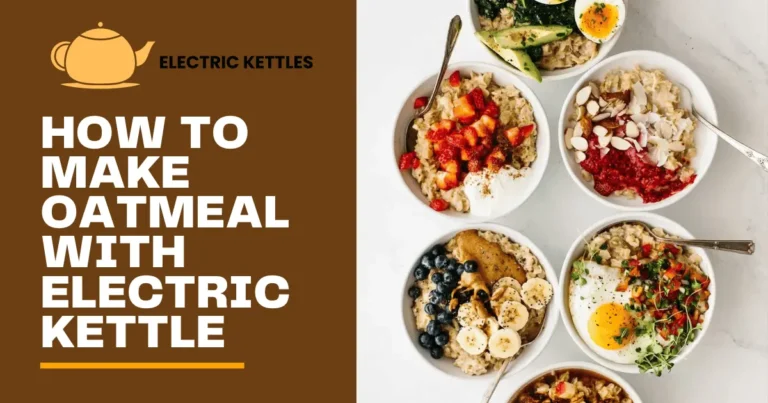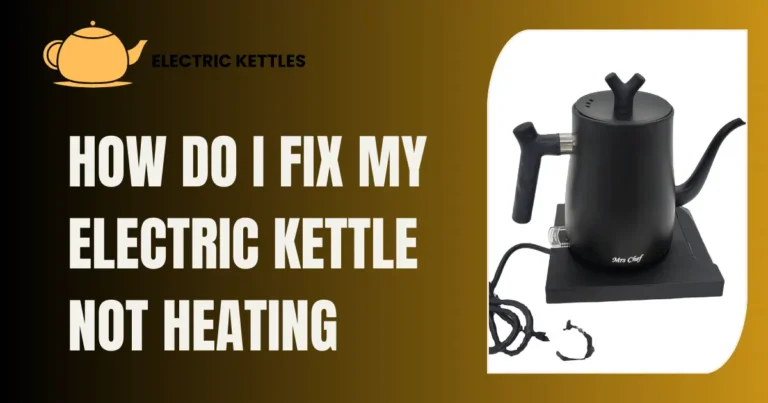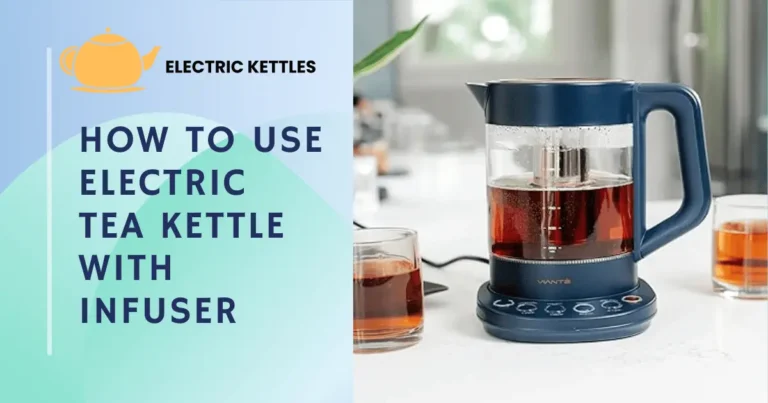How to Heat Food in an Electric Kettle
Using an electric kettle to heat food can be quick and convenient. It works well for heating liquids or small amounts of food that can fit inside the kettle. However, it’s not suitable for all types of food. Only use the kettle for foods that won’t damage the heating element or cause a mess. Be sure to use appropriate containers and avoid any foods that can easily burn or stick.
Safety is crucial when using an electric kettle to heat food. Ensure the kettle is clean and dry before use to prevent contamination. Never overfill the kettle, as this can cause spills and damage. Avoid heating foods that can create a lot of steam or foam, as they might clog the kettle’s spout.
Table of Contents
Selecting Suitable Foods
When using an electric kettle to heat food, choose options that are safe and practical. Liquids like soups, broths, and sauces are ideal as they heat evenly and won’t damage the kettle. These foods generally don’t leave a residue that can harm the kettle’s heating element. For items like instant noodles or oatmeal, make sure they are placed in a small, heat-resistant container that fits comfortably inside the kettle. This helps to prevent messes and ensures even heating.
Certain foods should not be heated in an electric kettle. Avoid putting solid foods or anything that can create a lot of steam or foam, as these can cause spills and potentially damage the kettle. Foods with high sugar content or that can easily burn are also unsuitable. High-fat items or dairy products are risky because they can scorch and leave stubborn residues, making the kettle harder to clean.
Small amounts of food that fit well within the kettle are easier to heat and manage. Foods that are too thick or sticky can create problems, so stick to items that are more fluid or easily manageable. If you’re unsure, always err on the side of caution and check if the food’s texture and type are appropriate for the kettle.
Heating Food in the Kettle
Heating food in an electric kettle is straightforward but requires careful handling. First, ensure the kettle is clean and dry to avoid contamination. If you’re using a container inside the kettle, make sure it’s heat-resistant and fits well without touching the heating element. Pour the food or liquid into the container, avoiding overfilling to prevent spills. Place the container inside the kettle if your model allows for it.
Step-by-Step Instructions
- Prepare the Kettle: Start by cleaning the kettle thoroughly. Make sure there are no residues or water left from previous uses. Dry the kettle completely to prevent any unwanted moisture from mixing with your food. This step is crucial to ensure a clean heating process and avoid any potential issues.
- Add Food: If you’re heating liquids, you can pour them directly into the kettle. For solid foods or thicker items, use a small, heat-resistant container that fits comfortably inside the kettle. Avoid overfilling the container or the kettle, as this can lead to spills and messes. Leave some space to allow for steam expansion.
- Heat the Food: Turn on the kettle and let it heat the food. Keep an eye on the process to ensure the food heats evenly. Avoid leaving the kettle unattended to prevent overheating or burning. If your kettle has a temperature control, set it to the appropriate setting for the type of food you are heating.
- Check Temperature: Once the kettle has completed its heating cycle, carefully check the food’s temperature. You can use a kitchen thermometer to ensure it has reached the desired warmth. Stir the food if possible to ensure an even temperature throughout. If necessary, reheat the food in short intervals until it is adequately warmed.
Alternative Methods for Heating Food
While an electric kettle can be convenient for heating certain foods, there are other methods you might consider depending on your needs and the type of food you’re preparing. Each method has its advantages and limitations.
Microwave
The microwave is a popular choice for quickly heating food. It uses electromagnetic waves to heat food from the inside out, making it suitable for most liquids and many solid foods. It’s ideal for reheating leftovers or preparing ready-to-eat meals. Microwaves are fast and convenient, but they can sometimes heat unevenly, so stirring the food midway through is often necessary.
Stovetop
Using a stove is a traditional and versatile method for heating food. You can use various types of cookware, such as pots and pans, to heat liquids or solid foods. This method allows for precise temperature control and is excellent for foods that require careful cooking, such as sauces or stews. However, it requires more time and attention compared to a microwave.
Oven
An oven is another effective way to heat food, especially if you need to reheat larger quantities or bake dishes. It provides even heating and can accommodate a wide range of food types. However, preheating the oven can take some time, and it may not be as quick as a microwave or stovetop. The oven is great for heating casseroles, baked goods, and other dishes that benefit from even, dry heat.
Common Issues and Troubleshooting
When heating food in an electric kettle, you might encounter a few common issues. Addressing these problems promptly can help ensure safe and effective use of your kettle.
Overheating and Spills
One common issue is overheating, which can occur if the kettle is left on for too long or is overfilled. To prevent this, always monitor the kettle while it’s in use and avoid filling it beyond the recommended level. If you notice spills or excessive steam, it could be due to overfilling or using inappropriate foods. Reduce the amount of food or liquid and check the kettle’s capacity before starting.
Uneven Heating
Another problem is uneven heating, where parts of the food might be hotter than others. This can happen if the food is not stirred or if it’s placed unevenly inside the kettle. To address this, stir the food occasionally if possible and ensure it is evenly distributed. Use a thermometer to check if the food has reached a uniform temperature.
Residual Smells or Tastes
Sometimes, foods can leave residual smells or tastes in the kettle. This can affect future uses and be unpleasant. To prevent this, clean the kettle thoroughly after each use. Use a mixture of water and vinegar or baking soda to remove any lingering odors or residues. Make sure the kettle is completely dry before storing it.
Malfunctions
If the kettle isn’t heating properly or shows signs of malfunction, check for any visible issues such as damage to the power cord or heating element. Ensure that the kettle is plugged in correctly and that the power source is functioning. If problems persist, refer to the manufacturer’s troubleshooting guide or seek professional repair assistance.
Conclusion
Using an electric kettle to heat food is a convenient method for quickly warming liquids and small portions. It works best for items like soups, broths, and instant noodles. Ensure the kettle is clean and use heat-resistant containers when needed. Avoid overfilling to prevent spills and damage.
Monitor the heating process closely to avoid overheating. Check the food’s temperature to make sure it’s evenly warmed. If you encounter issues like uneven heating or residual smells, follow troubleshooting tips to resolve them.
